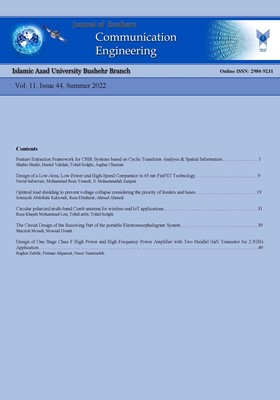-
-
List of Articles
-
Open Access Article
1 - Feature Extraction Framework for CBIR Systems based on Cyclic Transform Analysis & Spatial Information
Shahin Shafei Hamid Vahdati Tohid Sedghi Asghar Charmin -
Open Access Article
2 - Design of a Low-Area, Low-Power and High-Speed Comparator in 65 nm FinFET Technology
Navid Sabzevari Mohammad Reza Yousefi S. Mohammadali Zanjani -
Open Access Article
3 - Optimal Load Shedding to Prevent Voltage Collapse Considering the Priority of Feeders and Buses
Somayeh Abdollahi Kakroudi Reza Ebrahimi Ahmad Ahmadi -
Open Access Article
4 - Circular Polarized Multi-Band Comb Antenna for Wireless and IoT Applications
Reza Khajeh Mohammad Lou Tohid aribi Tohid Sedghi -
Open Access Article
5 - The Circuit Design of the Receiving Part of the Portable Electroencephalogram System
Marzieh Moradi Mosoud Dousti -
Open Access Article
6 - Design of One Stage Class F High Power and High Frequency Power Amplifier with Two Parallel GaN Transistor for 2.5GHz Application
Bagher Zabihi Peiman Aliparast Naser Nasirzadeh
-
The rights to this website are owned by the Raimag Press Management System.
Copyright © 2021-2025







